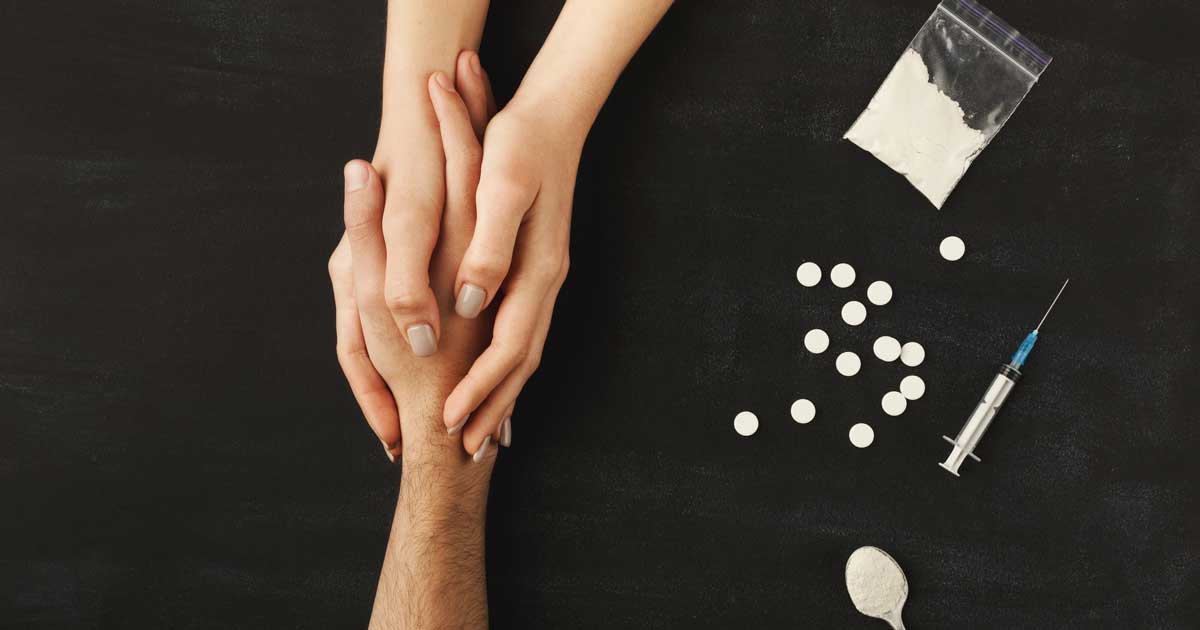In recent years, opioid addiction has appeared as one of the most demanding public health crises, involving millions of individuals worldwide. This epidemic learns no bounds, affecting people of all ages, backgrounds, and socioeconomic groups. At its core, opioid addiction implicates the misuse and dependence on powerful pain-relieving substances, including pharmaceutical painkillers like oxycodone and hydrocodone, as well as prohibited drugs such as heroin.
The results of rehab for opioid addiction are destructive, with communities scuffling with soaring rates of overdose deaths, destroyed families, and weakened healthcare systems. According to the Centers for Disease Control and Prevention (CDC), opioid overdoses asserted the lives of over 70,000 Americans in 2019 alone, stressing the urgent need for useful interposing and treatment techniques.
In this blog, we will dig into the critical topic of rehab for opioid addiction, exploring the mixed elements of treatment and recovery. From understanding the course of rehab programs to assessing their significance, we will supply helpful perspicuity into this crucial aspect of addiction treatment.
Opioid Addiction
Opioid addiction, or opioid use disorder, is a chronic condition marked by obsessive opioid use despite negative outcomes. It’s a transnational epidemic involving millions, impacted by genetics, environment, and opioid exposure. The influence rises to families, communities, and public health, posing important risks.

Factors Contributing to Opioid Addiction
- Genetic predisposition: Some individuals may have a genetic vulnerability to opioid addiction, increasing susceptibility.
- Environmental influences: Social factors like peer pressure and trauma can contribute significantly.
- Exposure to opioids: Access to prescription medications and illicit drugs elevates addiction risk.
Impact of Opioid Addiction
- Health consequences: Opioid addiction leads to overdose threats and mental health issues.
- Social and economic burden: Disrupted relationships and financial fluctuation are typical.
- Public health crisis: Opioid addiction pulls healthcare and law enforcement help.
- Stigmatization and discrimination: Individuals with addiction frequently face societal judgment and obstacles to treatment.
The Role of Rehab Of Opioid Addiction Treatment
Rehabilitation programs play a crucial role in managing opioid addiction by supplying extended treatment and support services to individuals aiming for recovery. These programs aspire to handle the physical, psychological, and social factors of addiction through a combination of interventions.
Purpose of rehab in addressing opioid addiction
- To deliver a structured atmosphere for people to detoxify from opioids safely.
- To preach the underlying factors contributing to addiction and glorify long-term recovery.
- To prepare individuals with coping skills and strategies to control relapse.
- To suggest support and guidance in reconstructing a healthy and fulfilling life free from opioid dependency.
Components of rehab programs for opioid addiction
Detoxification
- Safely handled retreat symptoms beneath medical supervision.
- Observing critical signs and helping with necessary medications.
- Supplying supportive care for ease and safety during detox.
Therapy and counseling
- Separate sessions to manage underlying problems and devise coping skills.
- Group therapy for peer support and shared experiences.
- Family therapy to strengthen support systems and address familial dynamics.
Medication-assisted treatment (MAT)
- Prescription of FDA-approved medications to relieve cravings and symptoms.
- Combined with therapy for complete treatment of addiction.
- Regular monitoring and adjustments to raise the outcomes.
Aftercare and support services
- Persisted counseling and therapy for sobriety care.
- Referral to community resources and support groups.
- Development of relapse prevention plans for long-term success.
Importance of personalized treatment plans
- Realizing that each individual’s journey to recovery is unique, rehab for opioid addiction programs prioritize personalized treatment plans.
- Personalization allows for customized interventions that address each person’s specific needs, preferences, and circumstances.
- By looking at factors such as the harshness of addiction, co-occurring mental health disorders, and social support networks, personalized treatment plans optimize the effectiveness of rehab for opioid addiction programs and enhance the likelihood of sustained recovery.
Through these elements and personalized approaches, rehab for opioid addiction programs designate individuals to break free from the cycle of opioid addiction and reconstruct their lives with restored hope and precluding.
Factors Influencing the Duration of Rehab
The duration of rehab for opioid addiction ranges based on individual characteristics addiction severity, mental health conditions, and available resources. Programs range from short-term to long-term, each contributing specific benefits. Overall, rehab aims to entrust individuals with ongoing recovery and improved well-being.
The duration of rehab for opioid addiction varies due to several factors
- The severity of addiction: Severe cases may need longer treatment due to complex issues and frequent relapses.
- Individual needs: Tailored treatment plans, including therapy and counseling, can extend or shorten rehab based on personal progress.
- Co-occurring disorders: Addressing mental health issues alongside addiction can prolong rehab as integrated treatment is necessary.
- Level of care: Intensive programs with higher supervision and support may require extended periods for comprehensive recovery.
- Resource availability: Access to financial resources, insurance coverage, and supportive networks can impact the duration and quality of rehab.
These factors collectively determine the length of rehab, aiming to support individuals in achieving lasting recovery and improving their well-being.
Different Programs of Rehab for Opioid Addiction
Rehabilitation for opioid addiction offers various options, including inpatient, outpatient, and intensive programs. Inpatient care provides 24/7 support, while outpatient programs offer flexibility for daily life. Each type caters to varying needs, allowing individuals to find the best fit for their circumstances.
Inpatient rehab
- 24/7 care in a structured setting.
- Intensive therapy and peer support.
Outpatient rehab
- Flexible treatment while maintaining daily life.
- Regular therapy sessions and community support.
Intensive outpatient programs
- Higher care level than outpatient.
- Intensive therapy multiple times a week.
Partial hospitalization programs
- Daytime treatment with return home at night.
- Medical supervision and intensive therapy.
Long-term residential programs
- Extended stays for comprehensive treatment.
- Focus on life skills and reintegration into society.
Typical Length of Rehab for Opioid Addiction
Rehab for opioid addiction varies widely, lasting from 30 days to over six months. Factors like addiction severity and treatment progress influence duration. Short-term programs focus on stabilization and detox, while longer ones offer intensive therapy. Tailoring rehab to individual needs maximizes long-term success.
-
Short-term rehab programs (30 days)
Focus on stabilization and initial detoxification to kickstart the recovery journey.
-
Medium-term rehab for opioid addiction programs (60-90 days)
Provide a more comprehensive approach to therapy and support to address underlying issues.
-
Long-term rehab for opioid addiction programs (6 months to 1 year)
Offer extended care and intensive treatment to promote lasting recovery and relapse prevention.
-
Factors influencing the duration of rehab:
Severity of addiction, individual treatment goals, progress in recovery, and availability of support systems.
Effectiveness of Different Rehab Durations
Research indicates that longer rehab durations correlate with increased success rates and reduced relapse risk in opioid addiction treatment. However, individual factors like motivation and engagement also influence effectiveness. While short-term programs suffice for some, others benefit from longer-term support. Personalized treatment plans and ongoing support are crucial for successful recovery, regardless of duration.
-
Research findings on the efficacy of short-term vs. long-term rehab
Studies suggest that longer durations of rehab are associated with higher rates of success and lower risk of relapse for opioid addiction.
-
Benefits of longer treatment durations for opioid addiction
Longer-term rehab programs provide more time for individuals to address underlying issues, learn coping skills, and develop healthier behaviors.
-
Success rates and relapse prevention strategies
Longer-term rehab programs often incorporate comprehensive aftercare planning and support to help individuals maintain sobriety and prevent relapse.
Personalized Care in Opioid Addiction Rehab
Personalization is crucial in rehab for opioid addiction, offering tailored treatment plans to meet individual needs. Rehab programs provide various interventions, like medication-assisted treatment and counseling, customized to address each person’s challenges and goals. This personalized approach empowers individuals to take control of their recovery journey and develop the necessary skills to overcome addiction.
- Individualized treatment plans ensure that each person’s unique challenges and goals are addressed.
- Tailored rehab for opioid addiction programs adjusts interventions to suit specific needs and preferences, enhancing engagement and effectiveness.
- Continuum of care and transition planning facilitate a seamless transition from rehab to ongoing support, maximizing the chances of sustained recovery.
Overcoming Challenges in Rehab for Opioid Addiction
Rehab for opioid addiction is not without its challenges, as individuals may face withdrawal symptoms, psychological barriers, and cravings throughout the recovery process. However, with the right support and guidance, these challenges can be overcome, paving the way for a brighter future free from the grips of addiction. Building a strong support network, practicing self-care, and staying committed to treatment are essential strategies for navigating the road to recovery and achieving long-term sobriety.
- Withdrawal symptoms and detoxification are managed safely under medical supervision.
- Therapy and counseling address psychological and emotional barriers to addiction.
- Techniques like mindfulness help manage cravings and triggers effectively.
- Building a support network involving family, friends, and professionals is crucial for sustained recovery.
FAQs
Why are opioids addictive?
Opioids are typically prescribed for pain management, yet when they stimulate these reward mechanisms without a genuine need for pain relief, they can instigate repetitive drug use solely for enjoyment. Among the neural pathways affected by opioids is the mesolimbic reward system located in the midbrain.
How does the CDC respond to the opioid crisis?
The CDC’s efforts concentrate on: Observing patterns to gain deeper insights into and address the epidemic. Enhancing research through the gathering and examination of information regarding opioid-linked overdoses, and enhancing data accuracy to more effectively pinpoint regions requiring aid and assess prevention endeavors.
What CDC provides ideas for what you can do to prevent opioid overdose deaths?
Enhancing opioid prescription practices, minimizing opioid exposure, averting misuse, and addressing opioid use disorder are key strategies for preventing opioid overdose fatalities.
Conclusion:
Rehabilitation for opioid addiction is a vital step in addressing this widespread public health crisis. Through personalized care and comprehensive treatment programs, individuals can reclaim their lives from the grips of addiction. If you or someone you know is struggling, don’t hesitate to seek help today. Take the first step towards recovery and a brighter future. Reach out to a rehab facility, speak to a healthcare professional, or contact a support hotline for assistance. Remember, you’re not alone, and help is available!



